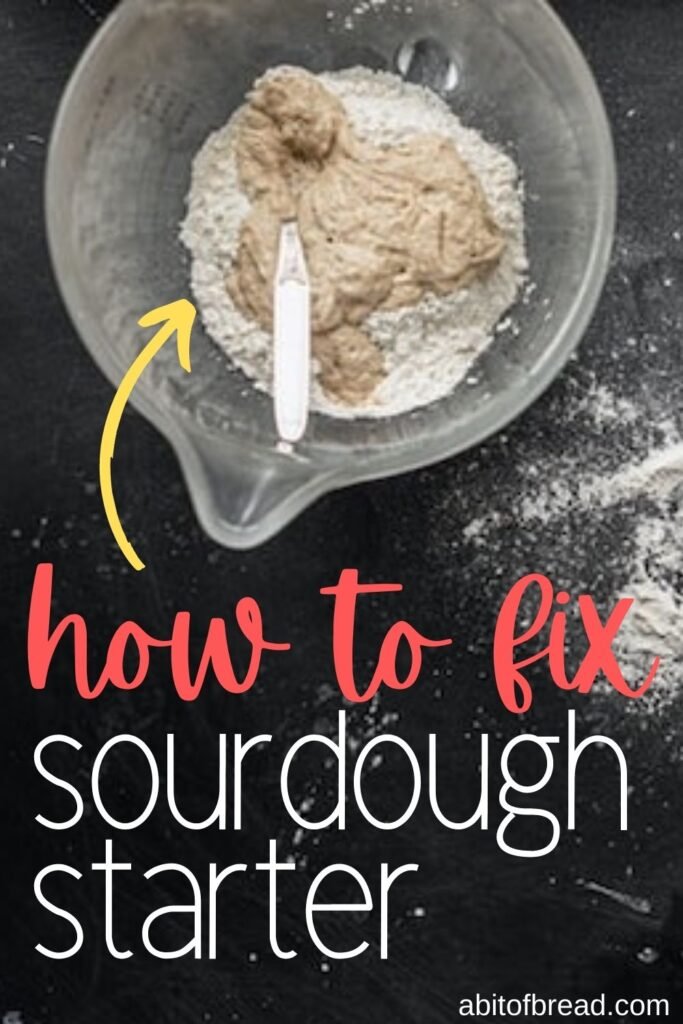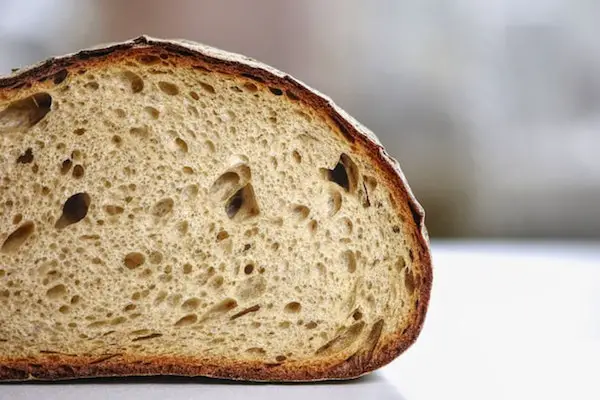Making sourdough starter is such a rewarding experience, but it’s fairly easy to run into several problems along the way. So, in this post, we’ll cover some common sourdough starter troubleshooting questions from master baker, Charlie of The Regular Chef. Let’s get to it:
Disclaimer: some links used in this post are affiliate links, which means I will earn a small commission if you purchase using my provided links at no extra cost to you. I only recommend products I think will be helpful to you and bring you one step closer to creating tasty bread masterpieces!
Create your first Sourdough Starter!
If you’re ready to dive into the world of sourdough starter, this class by Marceau Dauboin walks you through how to make your very own Sourdough Starter completely from scratch and be able to begin your Sourdough Baking Journey!
1. why do you use whole wheat flour and is it absolutely necessary?
or to put it another way… “can you make a starter without using whole wheat flour?”
…. and the short answer is no
Whole wheat flour is not one hundred percent necessary, although it certainly helps.
Whole wheat flour contains the whole wheat while white flour is the grain that is stripped off. Whole wheat flour therefore contains much more nutrition that allows yeast and bacteria to survive.
Personally, I would recommend starting with whole wheat flour to get your starter up and running; Once your starter is active, you can gradually switch to white flour if you prefer.
However, it’s important to remember that if you’re using white flour, you should use unbleached flour, as that bleaching process can remove much of the natural yeast and bacteria that live in the yeast and help your starter thrive.

2. Do you have to keep your starter at a certain temperature and what if your room temperature varies throughout the day?
No, you don’t need to keep your starter at a certain temperature, but you do need to be familiar with how your starter will behave in your particular environment.
So whether your room is 60 degrees or 80 degrees will make a big difference in how fast your starter goes up and down, but both will definitely work
In the 60 degree environment, you may need to maintain a higher percentage of your starter each day as it will rise and fall more slowly in that cooler environment. So keeping a higher percentage of your starter will speed up the activity a bit.
Now, if the temperature in your room varies during the day, that makes it a little more difficult, but in general try to familiarize yourself with how fast your starter is going up and down.
Assuming the changes and temperature are relatively constant from day to day, you should be fine.
At the end of the day, just make sure your starter goes up and down predictably and consistently.
Once you have an active starter, they are actually surprisingly tough. So, I wouldn’t worry too much about temperature fluctuations. Just try to be consistent with your feedings and use a ratio that allows it to rise and fall in about 24 hours every day.
3. what should I do if a liquid forms on my starter?
That liquid on top of your starter is known as hooch, and it’s an alcohol that forms on top of the starter as it develops and is completely normal, but it means your starter needs to be fed.
This usually happens more often within the first few days of getting your starter going, but it definitely doesn’t mean that you need to get rid of your starter or that you did anything wrong.
Just go ahead and mix the hooch in and continue to feed your starter as you normally would.

4. should I feed my starter every 24 hours or should I try to feed it when it starts to fall?
So technically, the best time to feed is when your starter has risen to its maximum height, and it’s just starting to fall – but you don’t really need to worry about that.
Just feed it consistently every 24 hours, and it’ll be just fine.
With that in mind, though, you do want to try to get your starter to rise and fall in about 24 hours or as close to it as possible.
For example, if your starter completes its cycle of rising and falling in just 12 hours, you should try to use a lower inoculation – aka: keep less of your adult starter each day to slow down its rise and fall.
Personally, I keep 25 grams of my starter every day and then feed it with 100 grams of flour and 100 grams of water. That’s a 1:4:4 ratio, and it works fine for me, but you may need to adjust that ratio to suit your specific environment.
Like I said, those starters are pretty resilient, so most people will be perfectly fine. Just feeding with that one to four to four ratio every 24 hours.
5. I followed all of the instructions, but my starter still isn’t active. What do I do?
Well, It depends where you’re at in the process. If it’s only been about a week or two, and your starter is having some signs of activity, I would just continue to feed it as you have been, and it should eventually strengthen and become more active.
However, if it’s been two weeks or more and you’re still not really seeing any sign of the activity, something probably went wrong, and you may need to just start over trying with a different type of flour or water.
Assuming you’re using unbleached or wholewheat flour – start with checking on your water.
If you’re using tap water, it’s possible that it contains high concentrations of chlorine or other treatment chemicals that are killing off your yeast and bacteria.
If that’s the case, try switching to filtered water and see if that makes a difference.
Keep in mind, though, tap water should work perfectly fine for most people, but it does vary from place to place depending on where you live, so it’s definitely worth giving filtered water a shot.

6. My starter is either too sour or not sour enough. What do I do?
There’s basically two main ways that you can manipulate how acidic your starter is, and the first is going to be the temperature that you keep it at.
Generally the cooler temperature you store it at, the more sour it’s going to be.
This happens because the starter contains both bacteria and yeast, which helps it rise and give that sour flavor. So at lower temperatures, the yeast activity slows down while that acid-producing bacteria remains pretty active, giving you a more sour flavor.
Whereas at a higher temperature, the yeast will be very active, so the starter will rise very quickly before the bacteria really has much time to produce that acid.
Now, The second factor that affects how sour your starter is is the inoculation percentage.
As a reminder, that’s how much starter that you keep each time you feed it.
The higher your inoculation percentage, the more sour your starter will generally be and, of course, as you’re making bread and working with your actual dough, the same principles apply.
So if you want a more sour loaf, you can either use more leaven or you can perform your Bullock rise or your final rise or both at a lower temperature.
7. what do I do if my starter doesn’t pass the float test?
A lot of people put a big emphasis on the float test, and while it can be a good indication that your starter is ready to bake with, in my experience, it’s not 100 % necessary.
As long as your starter at least doubles in size and rises and falls consistently, it should be fine to bake with it.
I baked plenty of successful loaves without it passing the float test, and, to be honest, I don’t really even bother with it anymore. Instead, I just go based on how much my starter has risen.
As you get more experience, you’ll be better able to tell whether your leaven is ready or not.
8. do I have to throw away my excess starter?
…. and the answer is yes, you do have to remove your excess starter each time you feed it to prevent it from getting larger and larger each time.
But that doesn’t mean you have to get rid of it. You can always use the excess to bake bread, but there’s a lot of other things you can do with it – like make pancakes, waffles, bagels, flat bread and really anything you can think of.



